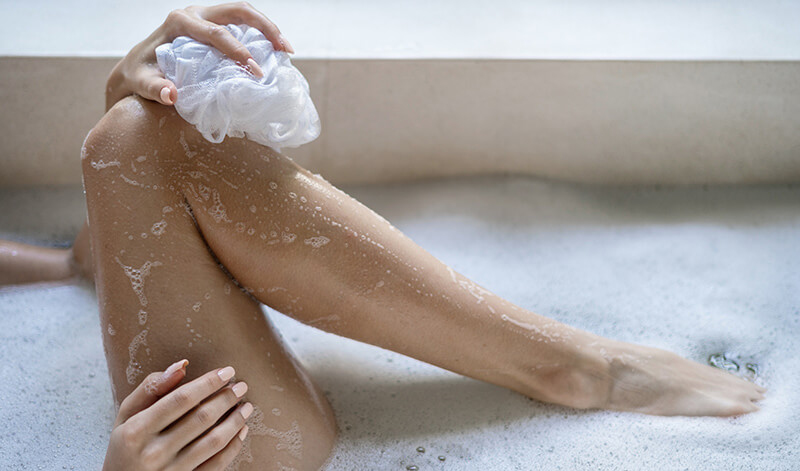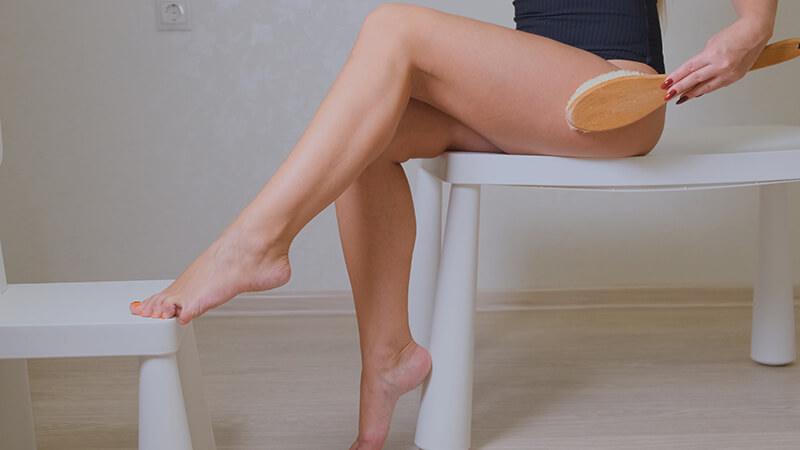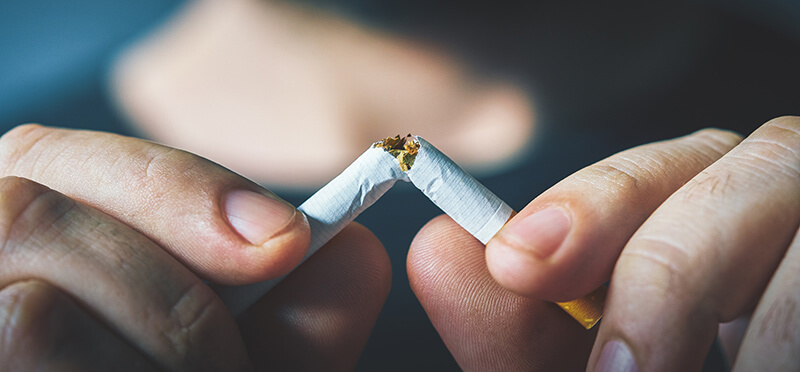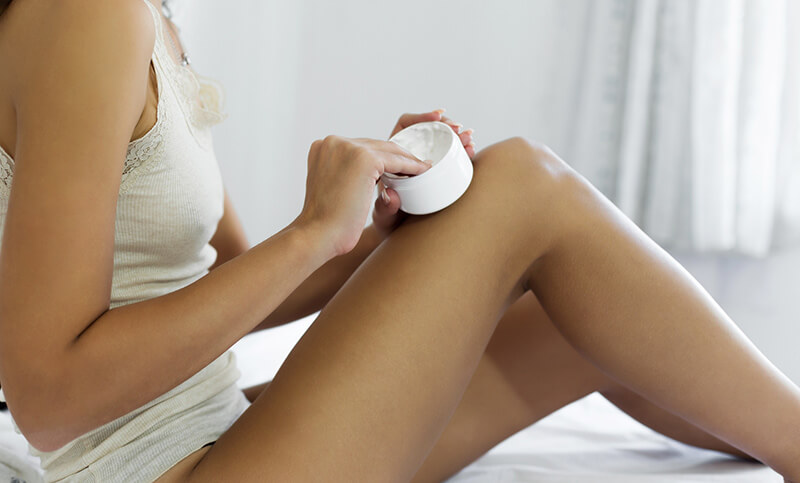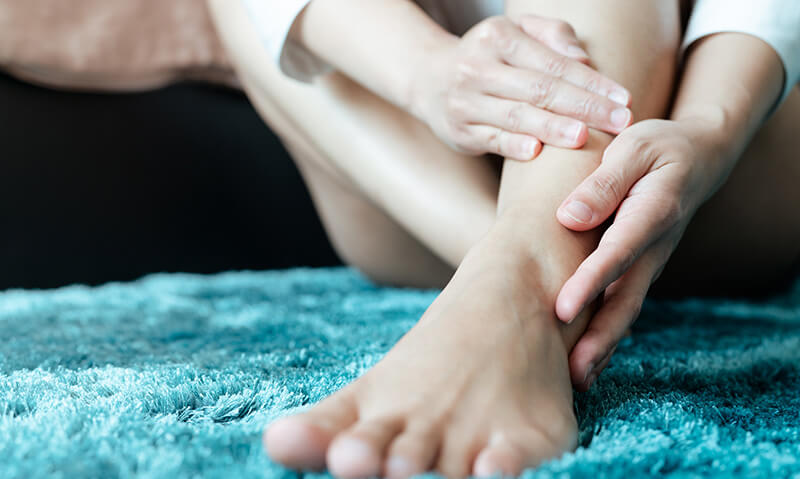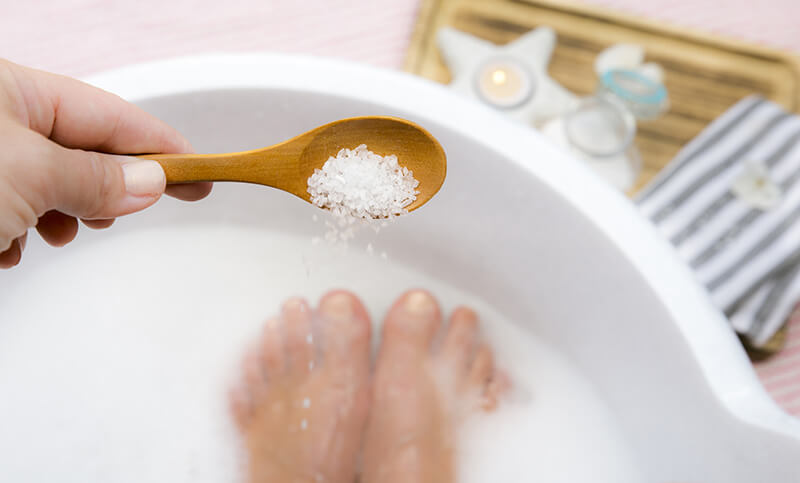We all know the drill. Once the winter chill sneaks in, it’s easy to lack moisture and mobility in our lives. Our skin gets drier and our muscles get tighter. This means our legs need extra attention and care during the winter months.
You may have noticed your skin gets dry when the cold weather begins. But winter brings more than dry skin. If you’ve also noticed leg cramps and soreness, you’re not alone. These symptoms are common in many people and can be exacerbated by the cold.
But there’s good news. You can combat both dry skin and leg cramps this winter season. Read over these helpful tips your legs will love.
How to Combat Dry Skin:
Reduce Shower Time
What’s not to love about a long, hot shower when it’s freezing out? But did you know those hot showers could be drying out your skin even more?
Reduce the amount of time you spend in a hot shower or bath by half. Try to keep your shower time to 10-15 minutes or less.
Use Gentle Cleansers
You may have heard the term pH balance in the skincare world before. But if you haven’t, let’s go back to the basics. pH stands for potential hydrogen, which is a measure of the element’s activity in a substance.
The pH scale ranges from 1 to 14. A pH level of seven is neutral and anything lower is acidic. Anything higher than 7.0 is considered in the alkaline range. Skin tends to be naturally acidic and depending on the area of skin tested, it usually averages between 4.7 and 5.0.
An ideal skin pH is between 4.7 and 6.0, which is slightly acidic. Many soaps or body washes score over eight on the pH scale. The use of certain products disrupts the skin’s ability to maintain a healthy pH level. This could be a major reason why the skin on your legs is dry, flaky, itchy, and inflamed.
Drink Water
Staying hydrated is key for your skin to retain moisture. Try to drink more water. It’s easy to drink plenty of water in warmer weather. Nothing is more refreshing on a hot day than a tall glass of ice water
But when it’s cold, we tend to reach for hot lattes, which dehydrate our body. Even more so if you’re not drinking enough water to counteract the caffeine.
Exfoliate
One of the most important tips for having smooth, healthy skin is exfoliation. Exfoliation is the removal of dead skin cells from the surface of our skin.
Did you know our skin naturally sheds dead skin every 30 days? But sometimes, dead skin cells don’t shed completely. This leaves the skin looking dry and flaky.
The key to exfoliating in the winter is knowing how often to do it. Meaning, don’t exfoliate more than once a week as it can be too harsh for your skin.
To exfoliate the legs, try “dry brushing”. This is exactly what it sounds like: brushing your skin with a dry brush. Brushing the skin while it’s dry will loosen dead skin so it will wash off easily in the shower.
Eat Fatty Acids
Eat more foods containing essential fatty acids (omega-3 and omega-6) such as lean meat, eggs, walnuts, and salmon. The body cannot make these fatty acids on its own. But they are essential for proper skin hydration and health.
Quit Smoking
Nicotine is a known blood vessel constrictor that can reduce oxygen levels in the body. Insufficient oxygen may lead to pale, itchy dry skin that worsens in winter.
Smoking also increases the risk of varicose veins, leg soreness, and leg ulcers. If you smoke, ask your doctor about medications or programs available to help you stop.
Moisturize
Hydration is key for many aspects of our bodies. Our skin needs to retain moisture to function properly. Basic moisturizers will do the trick on the surface of the skin. But oils work to lock-in moisture deeper into the skin.
Skin oils, like baby oil, also act as a protective barrier between dry air and our skin. Try rubbing a few drops of baby oil on your legs after a shower.
Winter Leg Cramps
Now that we have our leg skin ready to combat the cold, let’s move on to our muscles.
Why Do Muscles Cramp More in Winter?
Muscles contract when they get cold as a way of preserving energy. This means you must exert more force to move your muscles in the cold.
Not using our contracted muscles increases stiffness, spasms, and cramps. Add slight dehydration during the winter, and you’ve got achy, tired legs.
For Muscle Pain Relief
Epsom Salt Soaks
Soak your legs in Epsom salt to soothe your muscles. Epsom salt is a magnesium sulfate compound used as a healing agent and pain reliever. Magnesium works well for relaxing constricted muscles and heal minor inflammation.
If you don’t feel like getting in the tub, just give your feet some love. Make a foot soak by filling your bathtub or a basin with water that covers your feet. Then add a 1/2 cup of Epsom salt and soak your feet for about 30 minutes. You’ll provide your feet with some relief and your legs will thank you.
Heating Pads
Place a heating pad or a moist cloth warmed in a microwave on achy areas of your legs. Note that moist heat is always better, as the hot moisture gets absorbed into the muscles.
Hydration is one of the most important things needed for our muscles. The Institute of Medicine (IOM) recommends drinking 10-16 cups of water a day.
If you have a bad habit of forgetting to drink water, don’t worry. Look for water bottles that light up or flash when it’s time to drink.
There are even water bottles that you can sync up with your phone and track your water intake. Add electrolytes to your water for an increased boost of hydration.
Exercises to Combat Leg Cramps
Basic Leg Scissors
Leg scissors are simple exercises you can do at home on the floor. This exercise increases circulation in your legs. It also helps maintain muscle tone in your thighs and lower abdomen. Although it doesn’t burn a lot of calories, it is a great way to reduce nighttime leg cramps. Try doing these daily for at least 15 minutes.
Lie on a mat and relax your back enough to feel the length of your spine against it. With your arms resting on the mat, lift both legs about a foot off the floor.
Raise your right leg slightly higher than the left leg. Then, lower your left leg down to the mat as you raise your right leg three or four inches higher. Repeat lifting and lowering legs if you feel comfortable doing so.
After several weeks of performing leg scissors, try wearing ankle weights for resistance.
Squat Rotations
Squat rotations are another great exercise for the legs. They improve flexibility, keep bones strong, and help prevent injury. Squat rotations are one of the best functional exercises to tone and strengthen the body.
Because of its low impact, this exercise is perfect for people of any age and body type.
You’ll need a light medicine ball or any small, weighted object for this exercise. Stand tall with feet hip-width apart and hold the ball in your hands. Keep your chest up, back flat, and your body weight on your heels.
Twist your torso while bringing the ball down to the outside of your left foot. Stand straight with the force of your heels. Repeat on the right side. Keep your eyes locked on the ball during the entire exercise. Do 10 reps on each side.
Stationary Single Leg Holds
The stationary single leg hold exercise works on every lower body muscle. This includes your glutes, quads, hamstrings, and calves. It’s a low impact exercise and doesn’t put too much pressure on knees or joints. Use a wall for support if you need to.
While keeping your knees close, pull your left leg behind your body with your left hand. Once you feel balanced, lift your right arm overhead. Try to keep as straight you can while holding this position and avoid turning your body to the side. Release and switch legs after 10 counts. Repeat three times on both sides.
Want to give your legs extra care this winter? Contact us at NJVVC today for a free varicose vein screening. Early detection is key to preventing damage caused by vascular disease.

